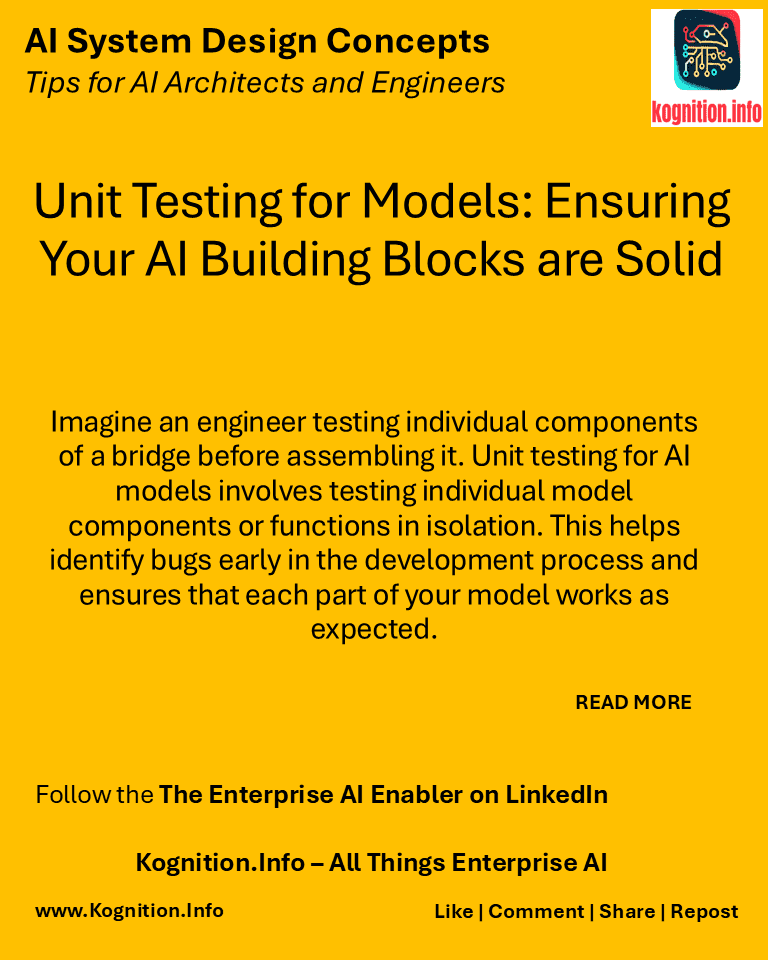
Imagine an engineer testing individual components of a bridge before assembling it. Unit testing for AI models involves testing individual model components or functions in isolation. This helps identify bugs early in the development process and ensures that each part of your model works as expected.
Use cases:
- Testing individual layers: Verifying that each layer of a neural network is functioning correctly.
- Testing data preprocessing: Ensuring that data preprocessing steps are transforming data as intended.
- Testing model outputs: Checking that the model produces the expected output for specific inputs.
How?
- Identify testable units: Break down your model into smaller, testable components.
- Write test cases: Create test cases that cover different scenarios and edge cases.
- Use testing frameworks: Utilize testing frameworks like pytest or unittest to automate test execution.
- Integrate with CI/CD: Incorporate unit tests into your CI/CD pipeline for continuous testing.
Benefits:
- Early bug detection: Identify and fix bugs early in the development process, reducing debugging time and effort later.
- Improved code quality: Promotes modular and well-structured code, making it easier to maintain and update.
- Increased confidence: Provides confidence that individual model components are working correctly.
Potential pitfalls:
- Test coverage: Ensure that your tests cover a wide range of scenarios and edge cases.
- Test data: Use realistic and representative test data to ensure meaningful results.
- Maintenance: Keep your unit tests updated as your model evolves.
